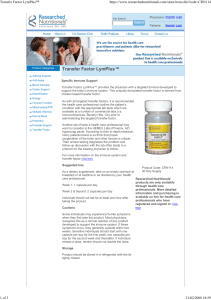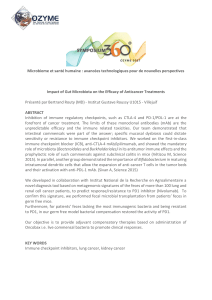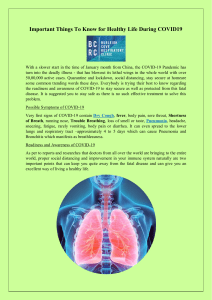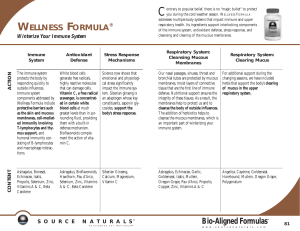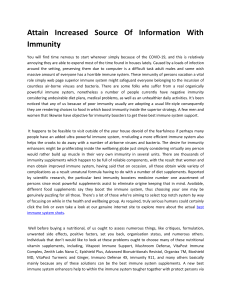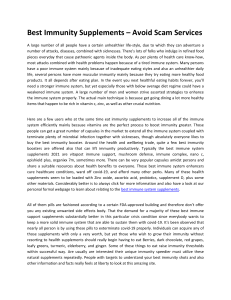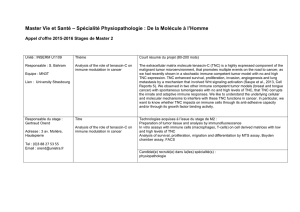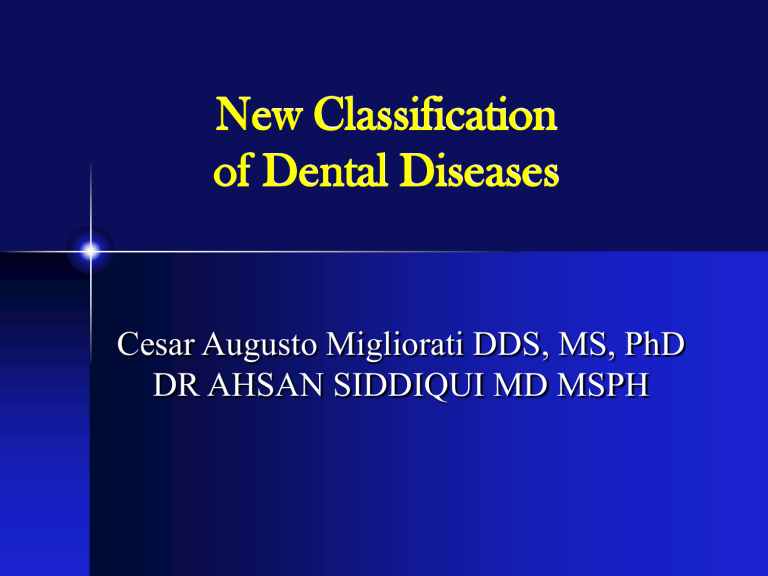
New Classification of Dental Diseases Cesar Augusto Migliorati DDS, MS, PhD DR AHSAN SIDDIQUI MD MSPH New Classification June 2004 Classification of oral diseases of HIVassociated immune suppression (ODHIS) Glick M, Abel SN, Flaitz CM, Migliorati CA, Patton LL, Phelan JA, Reznik DA (ODHIS Workshop Group-USA, Dental Alliance for AIDS/HIV CARE – DAAC) Classification of oral diseases of HIV – associated immune suppression (ODHIS) • Present classification systems for HIV – associated oral lesions developed in the early 1990’s • HAART • Changing pattern of oral conditions • New system needed Classification of oral diseases of HIV – associated immune suppression (ODHIS) • System should reflect: • • • • Changes in epidemiology of oral lesions Therapeutics Development of lesions and immune systems Oral lesions to oral disease • Oral disease: abnormality characterized by a defined set of signs and symptoms in the oral cavity, extending from the vermilion border of the lip to the oropharynx, with the exception of salivary gland disease New Classification • Group 1 – ODHIS associated with severe immune suppression (CD4<200 cells/mm3) • Group 2 – ODHIS associated with immune suppression (CD4<500 cells/mm3) • Group 3 – ODHIS assumed associated with immune suppression • A) More commonly observed • B) Rarely reported • Group 4 – Therapeutically-induced oral diseases • Group 5 – Emerging oral diseases Classification of oral disease of HIVassociated immune suppression (ODHIS) • Oral diseases do not belong exclusively to one classification Group • Overlap may exist Use for the New Classification • Identifying undiagnosed individuals • Provides additional rationale for HIV testing • Affects access and type of HIV-related healthcare • Provides clinical markers for therapeutic interventions and efficacy Group 1. ODHIS associated with severe immune suppression (CD4<200 cells/mm3) • • • • • • • • Major recurrent aphthous ulcer Neutropenia-induced ulcers Necrotizing ulcerative periodontitis Necrotizing stomatitis Cytomegalovirus (CMV) Chronic HSV Histoplasmosis Esophageal, pseudomembranous, and hypertrophic candidiasis • Oral hairy leukoplakia • Kaposi’s sarcoma Pseudomembranous Candidiasis Esophageal Candidiasis Hyperplastic Candidiasis Pseudomembranous Candidiasis / KS Kaposi’s Sarcoma Kaposi’s Sarcoma Histoplasmosis Periodontitis Idiopathic Necrotizing Stomatitis Consider: •Bacterial •Viral •Fungal •Combination Silverman, Eversole, Truelove. Essentials of Oral Medicine. London, B.C. Decker, 2001. Necrotizing Stomatitis Chronic HSV Group 2. ODHIS associated with immune suppression (CD4,500 cells/mm3) • Major recurrent aphthous ulcer • Increased frequency, harder to treat, atypical location • Erythematous candidiasis • Salivary gland disease • Drug induced low salivation • Facial palsy • Neuropathies • • • • Hyposalivation Human papilloma virus (HPV) Linear gingival erythema Non-Hodgkin’s lymphoma Aphthous Ulcer Erythemathous Candidiasis Linear Gingival Erythema Lymphoepithelial Cyst Human Papilloma Virus Group 3. ODHIS assumed associated with immune suppression • More commonly observed • • • • Angular candidiasis Herpes labialis Intra-oral herpes Minor aphthous ulcers • Rarely reported • • • • • Bacillary epithelioid angiomatosis Tuberculosis Deep-seated mycosis (except histoplasmosis) Molluscum contagiosum Varicella Zoster Virus (VZV) Angular Candidiasis HSV Labialis Intra-oral Herpes Minor Aphthous Ulcers Silverman, Eversole, Truelove. Essentials of Oral Medicine. London, B.C. Decker, 2001. Coccidiomycosis Group 4. Therapeutically-induced oral diseases • Side-effect • • • • • • • • • • Melanotic hyperpigmentation Ulcers Hyposalivation Lichenoid drug reaction Neutropenia-induced ulcers Thrombocytopenia Lypodystrophy-associated oral changes Perioral paresthesia Steven Johnson’s? Exfoliative cheilitis? • Resistance-induced disease • Different Candida spp and strains • HSV Antiretrovirals and Adverse Reactions • Drugs • • • • • • • • Indinavir Saquinavir Amprenavir Nevirapine Delavirdine Efavirenz Stavudine Didanosine • Adverse reactions • • • • • • Oral ulcers Stevens Johnson’s Taste changes Dryness Perioral paresthesia Thrombocytopenia Ulcers – Medication Induced Silverman, Eversole, Truelove. Essentials of Oral Medicine. London, B.C. Decker, 2001. Recurrent HSV Group 5. Emerging oral diseases • Human papilloma virus, several HPV types (may be associated with immune reconstitution) • Erythema migrans • Variants of Non-Hodgkin’s Lymphoma (NHL B-cell types) • Epithelial neoplasms • Aggressive interproximal dental caries Condyloma Accuminatum HPV Genotypes 6 & 11 Squamous Cell Carcinoma Trends in Cancer and HIV - Between 1996-2002, KS and cervical cancer declined, not NHL - Among Chicago clinic patients lung (RR = 3.63), HD (RR = 77.43), anorectal (RR = 5.03), melanoma (RR = 4.10), head/neck (RR = 9.96) - Compared to general population, incidence has notably increased in HIV-infected individuals Patel, P. et al. Incidence of non-AIDS defining malignancies in the HIV Outpatient Study. 11th CROI, San Francisco, CA 2004. Abstract 81 Aggressive Interproximal Caries
